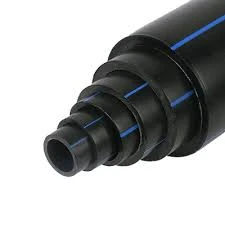Oct . 22, 2024 02:11 Back to list
Exploring the Benefits of PPR Pipes and Fittings for Modern Plumbing Solutions
Understanding PPR Pipes and Fittings A Comprehensive Overview
In the world of plumbing and construction, PPR pipes and fittings have emerged as a popular choice for numerous applications. PPR, which stands for Polypropylene Random Copolymer, is a thermoplastic polymer that is known for its durability, resistance to chemicals, and excellent thermal properties. This article aims to provide an extensive overview of PPR pipes and fittings, including their advantages, uses, and installation practices.
Advantages of PPR Pipes and Fittings
1. Durability One of the primary reasons PPR pipes are favored in plumbing systems is their exceptional durability. These pipes can withstand high pressure and are resistant to cracking, making them ideal for both hot and cold water applications. The lifespan of PPR pipes can often exceed 50 years, which ensures long-term reliability.
2. Corrosion Resistance Unlike metal pipes, PPR pipes do not corrode, which is a significant advantage in terms of maintenance and longevity. This property also ensures that water quality remains uncontaminated, as there is no risk of rust or leaching from the pipes.
3. Thermal Insulation PPR pipes offer superior thermal insulation, which helps in maintaining the temperature of the transported fluids. This is particularly beneficial in domestic hot water systems where energy efficiency is a crucial consideration.
4. Lightweight Being considerably lighter than metal alternatives, PPR pipes are easier to transport and handle. This characteristic simplifies the installation process and reduces associated labor costs.
5. Ease of Installation PPR pipes can be easily joined using a heat fusion method, which creates a seamless joint that is as strong as the pipe itself. This technique not only makes installation faster but also reduces the likelihood of leaks, enhancing the overall integrity of the plumbing system.
6. Cost-Effective Although the initial investment may be slightly higher than traditional pipes, the overall cost savings due to low maintenance and long lifespan make PPR pipes a cost-effective option in the long run.
Common Applications
PPR pipes and fittings are versatile and can be used in various applications, including
ppr pipes and fittings

- Residential Plumbing Most commonly, PPR pipes are used in domestic hot and cold water supply lines. - Industrial Applications Their resistance to chemicals makes them suitable for transporting aggressive fluids in industrial settings. - Heating Systems They are often employed in heating ventilation and air conditioning (HVAC) systems due to their thermal resistance.
- Irrigation Systems PPR pipes are also utilized in agricultural irrigation systems, where durability and resistance to environmental conditions are critical
.Installation Practices
Proper installation of PPR pipes and fittings is essential to ensure their longevity and performance. Here are some best practices
1. Preparation Ensure that all surfaces are clean and free from debris before starting the installation. Use appropriate tools for cutting and fitting the pipes.
2. Heat Fusion Technique Follow the manufacturer's guidelines for the heat fusion technique. The pipe ends must be heated uniformly, and once they reach the proper temperature, they should be joined quickly for a secure fit.
3. Expansion Considerations PPR pipes expand and contract with temperature changes. It is essential to include expansion loops or joints in long runs to accommodate this natural movement.
4. Testing After installation, conduct pressure tests to identify any potential leaks and ensure the system is functioning properly before it goes into service.
Conclusion
PPR pipes and fittings represent a modern solution to many plumbing and construction challenges. Their unique properties of durability, corrosion resistance, and thermal efficiency make them an excellent choice for a variety of applications. With proper installation and maintenance, PPR systems can provide reliable service for decades, making them a staple in both residential and industrial settings. As the construction industry evolves, PPR pipes and fittings are sure to remain at the forefront of innovative plumbing solutions.
-
PVC Transparent Sheet Roll - Durable & Flexible PVC Plastic Sheet Roll for Industrial & Home Use
NewsJun.24,2025
-
High-Quality PVC PPR Pipes and Fittings Durable ERA PPR Solutions
NewsJun.10,2025
-
High-Quality Large HDPE Sheets & Large Diameter PVC Pipe Durable Large PVC Pipe Supplier
NewsJun.10,2025
-
High Density Polyethylene Cutting Board - Durable & Food Safe
NewsJun.09,2025
-
3 Inch PVC Pipe for Durable Irrigation Affordable & Reliable
NewsJun.09,2025
-
Premium PPR Plastic Water Pipe Fittings - Durable & Leak-Free
NewsJun.09,2025

